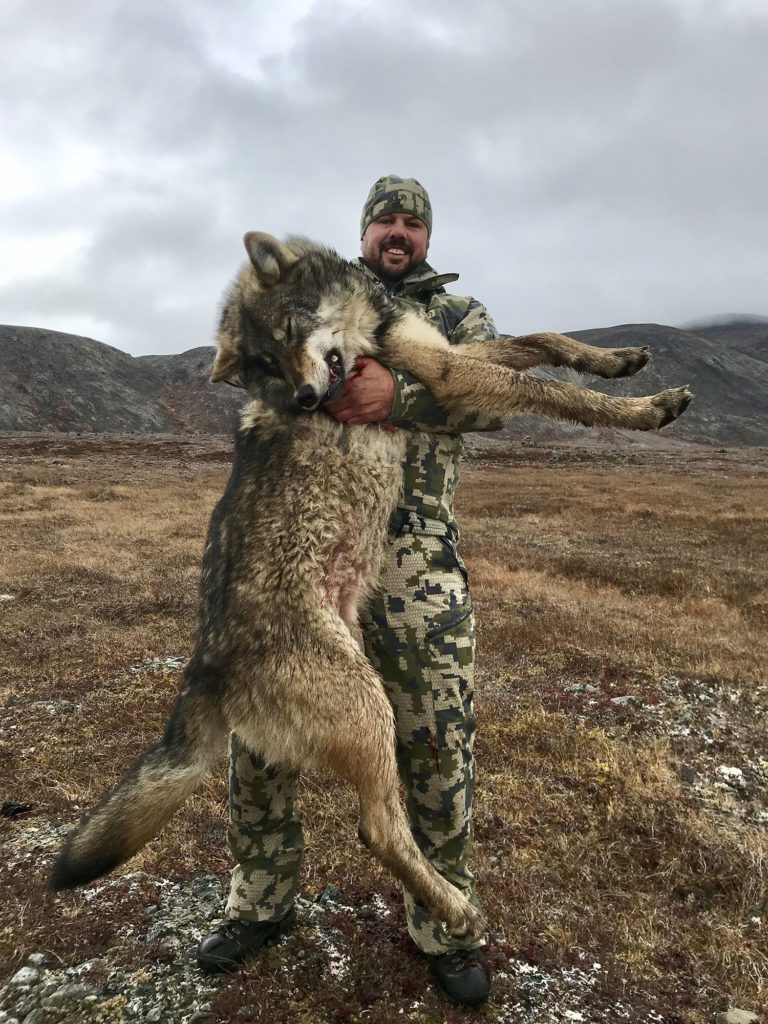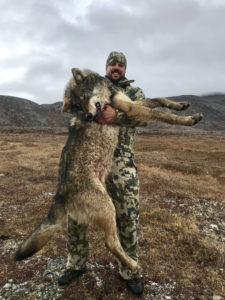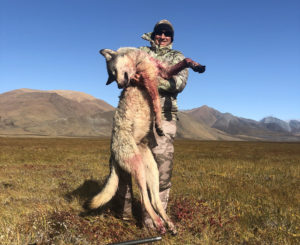We encourage hunters to purchase a wolf tag!
Check the regulations to verify that wolf season is open during your hunt dates, and if it is we recommend you get a tag. Wolves and caribou travel together. In fact many of our hunters report seeing wolves during their DIY caribou hunt. However, that doesn’t mean you’ll get one killed. Wolves are hard to hunt. Seeing wolves and getting one are two different things, but how frustrating to get an opportunity and not have a tag.
Some of the GMU’s we hunt do not require a wolf tag, while others do. Non-resident wolf tags are inexpensive and we encourage you to get at least one so that you’re covered regardless of where you hunt.
How to Skin a Wolf
Properly skinning, prepping, and drying a wolf hide for maximum potential is a chore and can take a lot of time if you’re not experienced. There are several things you can do to make life easier for your taxidermist to provide you a good end product.
- Wolves should be skinned right away so that the hair doesn’t slip on you, and they’re easier to skin when they’re still warm. Lighter to carry across tundra anyway.
- If you shot the wolf off of a fresh kill or they have a belly bulging with meat, you may want to make a small belly cut and gut them (as a full stomach of hot meat can cause spoilage extremely quickly), especially if the weather is warmer than zero degrees or so.
- Make your opening cuts with a knife, and then use your hands to push the hide away from the carcass. This will keep you from putting nicks in the hide.
- You can leave the paws in the hide and cut the feet off, which allows you to get the hide off the animal much more quickly.
- Here’s a good video on how to skin a wolf.
Good luck on your hunt!







